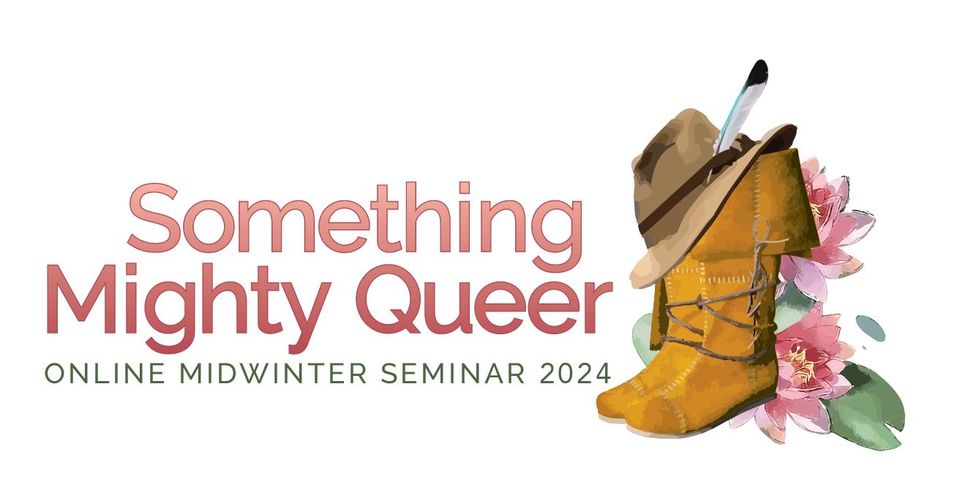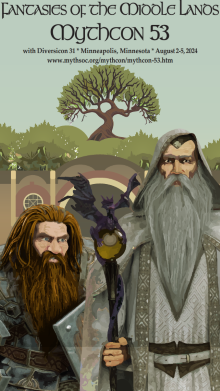Loading...
Event Website
https://www.mythsoc.org/oms/oms-2024.htm
Start Date
2-17-2024 4:00 PM
End Date
2-17-2024 4:50 PM
Description
I'd Rather Be a River than a Man: The Trans Jewish Golem Dean Leetal
This critical commentary revisits the Jewish story of the Golem and reads it as a transgender text. Some say that the Golem inspired Mary Shelley's Frankenstein, a story famously interpreted by Susan Stryker as an allegory for her own trans experience: living on the edge of society, her humanity debated, defined by a morally questionable medical establishment. But there are important differences between Frankenstein and the Golem. The Golem is brought to life through language, particularly the Hebrew word ‘emet,’ and is an animated clay tasked with protecting Jewish marginalized communities. Today, questions of language and truth are at the center of many debates regarding the validity and nature of transgender people. The concept of protecting marginalized communities, even while being rejected from them, is also painfully relevant. Unlike Frankenstein, though, the Golem is not verbal, which is linked to autism. Thus, I argue that a neurogender analysis of their story that accounts for both gender and neurodivergence is critical. This reading focuses on these points of relation and what they may bring to light.
Trans Inequity, Intersectional Ritual, and Jewish Tikkun Olam (Healing of the World) Valerie Estelle Frankel
As Jewish science fiction expands into twenty-first-century questions of identity, some authors explore the trans experience and build bridges towards intersectionality. Ritual and tradition become popular subjects. In the post-apocalyptic Fragments of the Brooklyn Talmud by Andrew Ramer, diverse rabbis create new prayers and practices. A Half-Built Garden by Ruthanna Emrys offers protagonists from a diverse commune. There, Judy Wallach-Stevens encounters aliens and negotiates with them, since they find nursing mothers better suited to the peace process. The story ends with an inclusive Passover seder, even as the new allies resist their oppressors, the corporations. Bogi Takács’ short story “Three Partitions” questions where to segregate the shapeshifting alien Adira, and why the Orthodox space colony must make changes. In “Unifications,” the characters of different eras quest to gather the sparks of the shattered world to bring universal healing. Several of these stories ask how comfortable Jewish protagonists are with alien rituals and explore incorporating or blending them for a truly universal experience. All consider how to change practice for a more inclusive twenty-first century religion.
Creative Commons License

This work is licensed under a Creative Commons Attribution-NonCommercial-No Derivative Works 4.0 International License.
Included in
Children's and Young Adult Literature Commons, Comparative Literature Commons, Digital Humanities Commons, European Languages and Societies Commons, Literature in English, Anglophone outside British Isles and North America Commons, Literature in English, British Isles Commons, Literature in English, North America, Ethnic and Cultural Minority Commons, Medieval Studies Commons, Modern Languages Commons, Modern Literature Commons, Other English Language and Literature Commons
I'd Rather Be a River than a Man: The Trans Jewish Golem/ Trans Inequity, Intersectional Ritual, and Jewish Tikkun Olam (Healing of the World)
I'd Rather Be a River than a Man: The Trans Jewish Golem Dean Leetal
This critical commentary revisits the Jewish story of the Golem and reads it as a transgender text. Some say that the Golem inspired Mary Shelley's Frankenstein, a story famously interpreted by Susan Stryker as an allegory for her own trans experience: living on the edge of society, her humanity debated, defined by a morally questionable medical establishment. But there are important differences between Frankenstein and the Golem. The Golem is brought to life through language, particularly the Hebrew word ‘emet,’ and is an animated clay tasked with protecting Jewish marginalized communities. Today, questions of language and truth are at the center of many debates regarding the validity and nature of transgender people. The concept of protecting marginalized communities, even while being rejected from them, is also painfully relevant. Unlike Frankenstein, though, the Golem is not verbal, which is linked to autism. Thus, I argue that a neurogender analysis of their story that accounts for both gender and neurodivergence is critical. This reading focuses on these points of relation and what they may bring to light.
Trans Inequity, Intersectional Ritual, and Jewish Tikkun Olam (Healing of the World) Valerie Estelle Frankel
As Jewish science fiction expands into twenty-first-century questions of identity, some authors explore the trans experience and build bridges towards intersectionality. Ritual and tradition become popular subjects. In the post-apocalyptic Fragments of the Brooklyn Talmud by Andrew Ramer, diverse rabbis create new prayers and practices. A Half-Built Garden by Ruthanna Emrys offers protagonists from a diverse commune. There, Judy Wallach-Stevens encounters aliens and negotiates with them, since they find nursing mothers better suited to the peace process. The story ends with an inclusive Passover seder, even as the new allies resist their oppressors, the corporations. Bogi Takács’ short story “Three Partitions” questions where to segregate the shapeshifting alien Adira, and why the Orthodox space colony must make changes. In “Unifications,” the characters of different eras quest to gather the sparks of the shattered world to bring universal healing. Several of these stories ask how comfortable Jewish protagonists are with alien rituals and explore incorporating or blending them for a truly universal experience. All consider how to change practice for a more inclusive twenty-first century religion.


